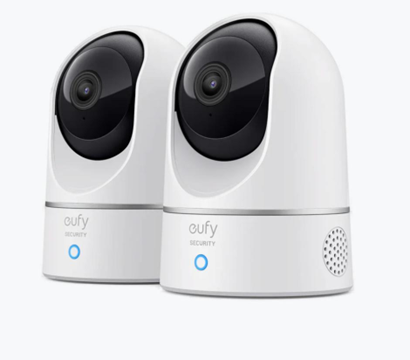Breast pumping is a valuable tool
for many mothers, allowing them to provide breast milk to their babies while
maintaining flexibility in their schedules. However, frequent pumping can
sometimes lead to sore nipples, a common issue that can make the process
uncomfortable or even painful. Sore nipples can be caused by a variety of
factors, including improper flange fit, excessive suction, or over-pumping.
Fortunately, there are effective ways to soothe and prevent this discomfort. In
this article, we’ll explore practical strategies to help you soothe sore
nipples from breast pumping.

How to Ease Nipple Discomfort from
Breast Pumping
The following is a list of tips on
how you can ease nipple discomfort from breast pumping.
Ensure Proper Flange Fit
One of the most common causes of
sore nipples is using a breast pump with an improperly fitted flange. The
flange is the part of the pump that comes into direct contact with your breast,
and if it’s too small or too large, it can cause unnecessary friction and
pressure, leading to soreness. To ensure the fitting, start by checking the
size of your flange. The correct flange should fit comfortably around your
nipple without causing any pinching or squeezing. Your nipple should move
freely within the tunnel of the flange during pumping without rubbing against
the sides. If you’re unsure about the correct size, consider consulting a
lactation consultant who can help you find the best fit. Using the right flange
size can significantly reduce nipple discomfort and prevent further irritation.
Adjust Pump Suction Settings
Using a breast pump with suction
that is too high can cause damage to your nipples, leading to soreness or even
cracking. Many pumps allow you to adjust the suction level, and finding the
right setting is crucial for comfort. To adjust the settings, start with the
lowest suction setting and gradually increase it until you find a level that
effectively expresses milk without causing pain. Pumping should never be
painful; if you experience discomfort, reduce the suction level immediately.
Some pumps also offer a letdown mode, which mimics a baby’s natural sucking
pattern and can be more comfortable for some mothers. Adjusting the suction
settings to a comfortable level can help prevent sore nipples and make pumping
a more pleasant experience.
Use Nipple Creams and Ointments
Applying nipple creams or ointments
can provide immediate relief for sore nipples. These products help to
moisturize and protect the skin, reducing friction and promoting healing. Look
for a lanolin-based nipple cream, as lanolin is known for its soothing and
protective properties. Apply the cream to your nipples before and after each
pumping session. If you prefer a natural alternative, consider using coconut
oil, which also has moisturizing and antibacterial properties. Make sure to
choose a product that is safe for your baby, so there’s no need to wipe it off
before breastfeeding or pumping. Regular use of nipple cream can prevent
cracking and keep your nipples soft and supple.
Take Breaks and Avoid Over-Pumping
Over-pumping or pumping for too long
can exacerbate nipple soreness. Your nipples need time to recover between
sessions, especially if they’re already sore. Limit your pumping sessions to
15-20 minutes per breast, and avoid pumping more frequently than necessary. If
your nipples are particularly sore, try taking longer breaks between sessions
or pumping less frequently until they heal. Remember that breast pumping is a
process, and it’s essential to listen to your body. If you feel that your
nipples need more time to recover, don’t hesitate to adjust your pumping
schedule accordingly.
Apply Warm or Cold Compresses
Warm or cold compresses can be
incredibly soothing for sore nipples. They help to reduce inflammation, relieve
pain, and promote healing. For warmth, use a warm, damp cloth or a microwavable
heat pack. Apply it to your nipples for a few minutes before pumping to help
soften the tissue and stimulate milk flow. After pumping, a cold compress, such
as a gel pack or a cloth dipped in cold water, can help reduce swelling and
numb the pain. Alternating between warm and cold compresses can provide
comprehensive relief and speed up the healing process.
Practice Good Breast Hygiene
Maintaining good breast hygiene is
crucial when dealing with sore nipples. Keeping your nipples clean and dry
helps prevent infection and further irritation. After each pumping session,
gently cleanse your nipples with warm water and pat them dry with a clean, soft
towel. Avoid using harsh soaps or alcohol-based products, as they can dry out
the skin and exacerbate soreness. Wearing breathable, cotton nursing pads can
help absorb any excess moisture and keep your nipples dry between sessions.
Ensuring your nipples are clean and dry will support the healing process and
prevent additional discomfort.

Final Thoughts
Sore nipples from breast pumping are
a common issue, but they don’t have to disrupt your breastfeeding journey. By
ensuring a proper flange fit, adjusting pump suction settings, using nipple
creams, taking breaks, applying compresses, and practicing good hygiene, you
can soothe your sore nipples and continue to pump comfortably. If the soreness
persists or worsens, consult a lactation expert for personalized advice and
support. Taking proactive steps to care for your nipples will help you maintain
a positive and pain-free pumping experience. If you are experiencing sore nipples from pumping,
then you'd be happy to know that Eufy is offering a breast pump called the Eufy
Breast Pump S1 Pro that is extremely comfortable and provides an app
integration that helps you manage the milk it collects.



